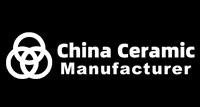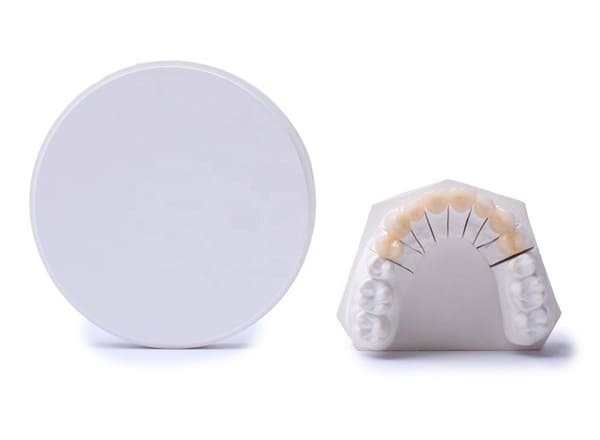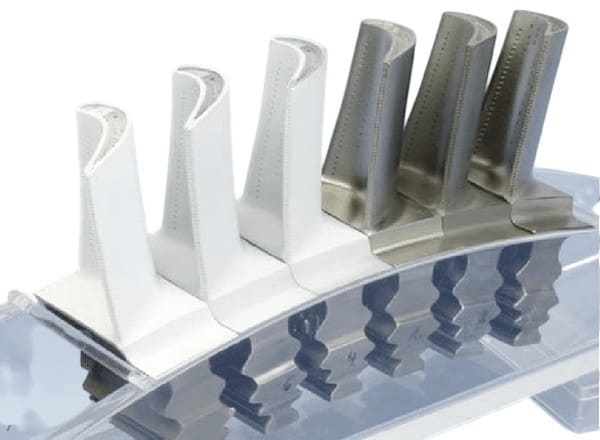YSZ Ceramic: 5 Key Benefits for Dental & Thermal Barrier Applications
Yttria-Stabilized Zirconia (YSZ) ceramic is a remarkable material that has gained prominence across industries due to its unique combination of strength, thermal resistance, and biocompatibility. Composed of zirconium dioxide stabilized with yttrium oxide, YSZ transforms pure zirconia’s brittle structure into a robust, versatile ceramic with applications in demanding environments. In fields like dentistry and aerospace, where materials must withstand extreme conditions while maintaining performance, YSZ has emerged as a game-changer. Its ability to serve as both a durable dental restoration and a protective thermal barrier coating (TBC) underscores its versatility.
The significance of YSZ lies in its ability to address critical challenges in dental and thermal barrier applications. In dentistry, patients demand restorations that are strong, aesthetically pleasing, and safe for long-term use in the body. In aerospace, turbine engines require coatings that protect components from intense heat and mechanical stress. This blog post explores five key benefits of YSZ ceramic that make it indispensable in these fields. By delving into its mechanical, thermal, and biological properties, we aim to highlight why YSZ is a material of choice for advancing healthcare and technology.
At China Ceramic Manufacturer, we specialize in high-quality YSZ ceramic products in various specifications, ensuring optimal performance for industrial and scientific applications.
What Is a YSZ Ceramic?
Yttria-Stabilized Zirconia (YSZ) ceramic is a high-performance material derived from zirconium dioxide (ZrO₂) that is stabilized with yttrium oxide (Y₂O₃), typically at 3–8 mol%. Pure zirconia undergoes phase transformations under temperature changes, leading to cracking and structural failure. The addition of yttria stabilizes zirconia in a cubic or tetragonal crystal structure, preventing these transformations and enhancing its mechanical, thermal, and chemical properties.
YSZ is renowned for its exceptional qualities, including high fracture toughness (5–10 MPa·m¹/²), low thermal conductivity (~2–3 W/m·K), excellent biocompatibility, and resistance to corrosion and wear. These properties make it ideal for demanding applications such as dental restorations (e.g., crowns, bridges, and implants) and thermal barrier coatings (TBCs) in aerospace, where it protects turbine blades from temperatures exceeding 1200°C. Its aesthetic versatility, with customizable translucency, also suits dental applications, while its durability ensures long-term performance in harsh environments.
1. Composition of YSZ Ceramic
| Component | Role | Typical Content (mol%) | Common Grades |
| ZrO₂ (Zirconia) | Base material | 92–97% | 3YSZ, 8YSZ |
| Y₂O₃ (Yttria) | Stabilizer (prevents phase transformation) | 3–8% | 3YSZ (3%), 8YSZ (8%) |
| Al₂O₃, SiO₂ (traces) | Sintering aids/impurities | <0.5% | Varies by manufacturer |
2. Physical Properties of YSZ
| Property | Value | Conditions/Notes |
| Density | 5.9–6.1 g/cm³ | Sintered (>99% density) |
| Color | White/off-white | Translucent in thin layers |
| Crystal Structure | Tetragonal (3YSZ), Cubic (8YSZ) | Stabilized phase |
| Grain Size | 0.2–1.0 µm | After sintering |
3. Mechanical Properties of YSZ
| Property | Value | Test Standard |
| Flexural Strength | 800–1200 MPa | ISO 6872 (dental grade) |
| Fracture Toughness (K<sub>IC) | 5–10 MPa·m1/2 | ASTM C1421 |
| Hardness (Vickers) | 12–14 GPa | 1 kg load |
| Young’s Modulus | 200–210 GPa | ASTM E111 |
| Compressive Strength | 2000–3000 MPa | — |
4. Thermal Properties of YSZ
| Property | Value | Conditions |
| Melting Point | ~2700°C | — |
| Thermal Conductivity | 2–3 W/m·K | 25°C |
| Thermal Expansion Coefficient | 10–11 × 10−6 /K | 25–1000°C |
| Maximum Service Temperature | 1200°C (long-term) | Up to 2000°C (short-term) |
| Thermal Shock Resistance | Excellent | Due to low thermal conductivity |
5. Electrical Properties of YSZ
| Property | Value | Conditions |
| Ionic Conductivity (σ) | 0.1 S/cm at 1000°C | 8YSZ (cubic phase) |
| Activation Energy (E<sub>a) | ~1.0 eV | For O2− conduction |
| Dielectric Constant | 25–30 (at 1 MHz) | — |
| Band Gap | ~5 eV | Insulator at RT |
6. Chemical Properties of YSZ
| Property | Behavior | Notes |
| Corrosion Resistance | Resistant to acids (except HF), alkalis, molten metals | Stable in biological fluids |
| Biocompatibility | Excellent | ISO 13356 certified |
| Oxidation Resistance | High (forms passive layer) | — |
Looking for high-quality zirconia ceramic products? Explore China Ceramic Manufacturer’s selection.
Having explored the fundamental properties and versatile applications of Yttria-Stabilized Zirconia (YSZ) ceramic, it’s clear that this material stands out for its exceptional performance in demanding environments. To understand why YSZ is a preferred choice in dental and thermal barrier applications, let’s delve into five key benefits that highlight its unique advantages and transformative potential.
Benefit 1: Exceptional Mechanical Strength
One of YSZ’s most significant advantages is its exceptional mechanical strength, characterized by high fracture toughness and hardness. Unlike traditional ceramics, which are brittle, YSZ’s stabilized structure allows it to resist cracking under stress, a property known as transformation toughening. When subjected to mechanical forces, microcracks in YSZ trigger a phase change that absorbs energy and prevents further crack propagation, resulting in a material that rivals the toughness of some metals.
Exceptional Mechanical Strength of YSZ Ceramics
| Property | Value Range | Comparison & Significance | Key Applications |
| Flexural Strength | 800–1200 MPa | ~2× stronger than alumina (Al₂O₃, 300–500 MPa) | Dental crowns, load-bearing implants |
| Fracture Toughness (KIC) | 5–10 MPa·m1/2 | Higher than most ceramics (e.g., glass: 0.7–0.8 MPa·m1/2) | Cutting tools, wear-resistant parts |
| Compressive Strength | 2000–3000 MPa | Comparable to high-grade steels | Industrial grinding media |
| Hardness (Vickers) | 12–14 GPa | Harder than stainless steel (1–3 GPa) | Precision bearings, valves |
| Young’s Modulus | 200–210 GPa | Similar to tungsten carbide (WC) | Structural components |
Why Does YSZ Have Such High Strength?
✅ Transformation Toughening:
- Under stress, YSZ’s tetragonal grains (3YSZ) transform to the monoclinic phase, expanding locally to compress cracks and prevent propagation.
- Effect: Increases fracture toughness by 2–3× compared to unstabilized ZrO₂.
✅ Fine Grain Structure:
- Sintered YSZ has submicron grains (0.2–1.0 µm), reducing defects that weaken materials.
✅ Yttria Stabilization:
- 3–8 mol% Y₂O₃ locks zirconia in a tougher tetragonal/cubic phase, avoiding brittle monoclinic transitions.
Performance Comparison
| Material | Flexural Strength (MPa) | Fracture Toughness (MPa·m1/2) | Hardness (GPa) | Key Strengths/Limitations |
| 3YSZ (Yttria-Stabilized ZrO₂) | 800–1200 | 5–10 | 12–14 | High toughness, transformation toughening |
| 8YSZ (Cubic ZrO₂) | 500–800 | 2–4 | 10–12 | Superior ionic conductivity, lower strength |
| Alumina (Al₂O₃) | 300–500 | 3–4 | 15–20 | High hardness, low cost, brittle |
| Silicon Carbide (SiC) | 400–600 | 3–4 | 25–30 | Extreme hardness, thermal shock resistant |
| Silicon Nitride (Si₃N₄) | 700–1000 | 6–7 | 14–17 | High thermal stability, good toughness |
| Boron Carbide (B₄C) | 300–500 | 2–3 | 30–35 | Ultra-hard, lightweight, brittle |
| Tungsten Carbide (WC) | 500–700 | 10–15 (with Co binder) | 20–25 | Metal-like toughness, heavy |
| Mullite (3Al₂O₃·2SiO₂) | 150–300 | 2–3 | 6–8 | Low thermal expansion, weak |
Explore our optimized zirconia ceramic products.
Benefit 2: Superior Thermal Insulation
YSZ ceramic is renowned for its superior thermal insulation, thanks to its low thermal conductivity, typically around 2–3 W/m·K. This property allows YSZ to act as an effective barrier against heat transfer, making it ideal for applications where temperature regulation is critical. In high-temperature environments, YSZ can maintain a significant temperature gradient, protecting underlying components from thermal damage while remaining stable itself.
In dentistry, YSZ’s low thermal conductivity ensures patient comfort by minimizing heat transfer from hot or cold foods to the underlying tooth structure. This is particularly important for crowns and bridges, where thermal sensitivity can cause discomfort. In thermal barrier applications, YSZ coatings are applied to turbine blades and combustors in jet engines, where they shield metal substrates from temperatures exceeding 1200°C. By reducing thermal stress, YSZ extends the lifespan of these components, improving engine efficiency and reducing maintenance costs.
Thermal Properties of YSZ vs. Other Materials
| Property | YSZ (8YSZ) | Alumina (Al₂O₃) | Silicon Carbide (SiC) | Stainless Steel (316L) | Notes |
| Thermal Conductivity (W/m·K, RT) | 2.0–2.5 | 25–30 | 120–150 | 15–20 | Lower = Better Insulation |
| Thermal Expansion (×10⁻⁶/K, 25–1000°C) | 10–11 | 8–9 | 4–5 | 16–18 | Matches well with metals |
| Max Service Temp. (°C, long-term) | 1200 | 1600 | 1600 | 800 | Stable under extreme heat |
| Thermal Shock Resistance | Excellent | Good | Very Good | Poor | Due to low thermal conductivity |
Why YSZ Excels in Thermal Insulation?
✅ Low Thermal Conductivity (2–3 W/m·K)
- Much lower than most ceramics (e.g., Al₂O₃: 25–30 W/m·K, SiC: 120–150 W/m·K).
- Minimizes heat transfer, making it ideal for thermal barrier coatings (TBCs) in jet engines.
✅ High Thermal Stability (Up to 1200°C)
- Maintains structural integrity without degradation, unlike metals that soften or oxidize.
✅ Excellent Thermal Shock Resistance
- Due to low thermal expansion (10–11 ×10⁻⁶/K) and moderate strength, it resists cracking under rapid temperature changes.
✅ Phase Stability
- Unlike unstabilized ZrO₂, YSZ does not undergo destructive phase transitions at high temperatures.
Request a custom quote for high-quality YSZ ceramic products.
Benefit 3: Excellent Biocompatibility
YSZ’s excellent biocompatibility makes it a preferred material for dental applications. As a bioinert ceramic, YSZ does not elicit adverse reactions when in contact with bodily tissues, ensuring safety for long-term use in the mouth. Its non-toxic nature and resistance to corrosion in the oral environment prevent the release of harmful ions, making it ideal for patients with sensitivities to metals or other materials.
In dental restorations, YSZ’s biocompatibility supports its use in crowns, bridges, and implants that integrate seamlessly with oral tissues. Unlike metal-based restorations, which may cause allergic reactions or galvanic corrosion, YSZ implants promote osseointegration, where bone bonds directly with the implant surface, enhancing stability. While biocompatibility is less relevant for thermal barrier coatings, YSZ’s chemical stability in harsh environments contributes to the reliability of coatings, indirectly supporting their performance in aerospace applications.
Performance Comparison in Medical Applications
| Application | YSZ Performance | Competitor Performance | Advantage of YSZ |
| Dental Crowns/Implants | >95% 10-year survival | Metal-ceramic: ~85% | No metal allergies, better aesthetics |
| Hip Joint Heads | <0.1 mm³/year wear | Metal-on-PE: ~50 mm³/year | No polyethylene debris |
| Orthopedic Screws | No corrosion | Titanium: Minor ion release | No long-term toxicity risk |
| Hearing Implants | No MRI interference | Metals cause artifacts | Safe for imaging |
Why is YSZ So Biocompatible?
✅ Chemically Inert Surface
- Does not corrode or release ions in the body (unlike metals such as titanium alloys, which may release Al/V ions).
- No inflammatory response.
✅ High Wear Resistance
- 3–5x lower wear rate than metal-on-metal (MoM) implants, reducing osteolysis (bone loss due to debris).
✅ Bone-Like Mechanical Properties
- Young’s Modulus (~200 GPa) is closer to bone (~30 GPa) than titanium (~110 GPa), reducing stress shielding.
✅ Hydrophilic Surface
- Promotes protein adsorption and cell attachment, enhancing osteointegration.
Benefit 4: Aesthetic Versatility
While primarily known for its mechanical and biomedical performance, YSZ (Yttria-Stabilized Zirconia) also offers exceptional aesthetic versatility, making it ideal for applications where appearance matters. Below is a detailed analysis of its optical properties, customization potential, and key applications in design-sensitive fields.
Advantages:
- Close color match to natural teeth.
- Allows for aesthetic dental work that doesn’t compromise on durability.
- Ensures a natural-looking result for patients.
At China Ceramic Manufacturer, we supply optimized-grade ceramic products that comply with ASTM and ISO standards, ensuring outstanding quality and reliability.
Benefit 5: Corrosion and Wear Resistance
YSZ ceramic excels in resisting corrosion and wear, making it highly durable in harsh environments. Its chemical stability prevents degradation when exposed to acidic or saline conditions, such as those found in the oral cavity or high-temperature engine environments. Additionally, YSZ’s high hardness minimizes surface wear, ensuring that restorations and coatings maintain their integrity over time.
In dental applications, YSZ’s resistance to corrosion and wear ensures that crowns, bridges, and implants remain functional and aesthetically pleasing despite exposure to saliva, acidic foods, and mechanical forces. This durability reduces the risk of restoration failure, benefiting patients with long-lasting solutions. In thermal barrier applications, YSZ coatings withstand corrosive gases and erosive particles in jet engines, extending the lifespan of turbine blades and reducing maintenance costs.
Industrial Applications Leveraging YSZ’s Durability
| Industry | Component | Competing Material | YSZ Advantage |
| Medical | Hip joint bearings | CoCrMo alloys | Zero metal ion release, 10× lower wear |
| Chemical | Pump seals/reactor linings | SiC | HF-resistant, cheaper than SiC |
| Marine | Propeller shafts | Ti alloys | No saltwater corrosion, no biofouling |
| Mining | Ore grinding media | WC-Co | No binder corrosion, longer lifespan |
| Energy | SOFC interconnects | Ni-based alloys | No oxidation at 800°C |
YSZ ceramic’s five key benefits—exceptional mechanical strength, superior thermal insulation, excellent biocompatibility, aesthetic versatility, and corrosion and wear resistance—make it an outstanding material for dental and thermal barrier applications. In dentistry, YSZ delivers durable, natural-looking, and biocompatible restorations that enhance patient outcomes. In aerospace, its thermal and mechanical properties protect critical components, improving efficiency and longevity. These advantages position YSZ as a cornerstone of innovation in healthcare and technology.
As research continues to address challenges like cost and brittleness, YSZ’s potential will only grow. Its ability to meet the demands of extreme environments underscores its importance in advancing modern technologies. Scientists, engineers, and dental professionals are encouraged to further explore YSZ’s capabilities, driving its adoption in new applications and solidifying its role as a transformative material.
For top-quality advanced ceramic materials, China Ceramic Manufacturer provides tailored solutions for various applications.
Looking for premium ceramic materials? Contact us today!


